
The Snowdrifts Cross Vatnajökull
Lífskraftur’s aim is to raise funds for the charities Líf and Kraftur. The first step was taken in June 2020 when eleven women crossed Vatnajökull, around 150 km, on cross-country skis. In total, around ISK 6 million was raised during the walk.
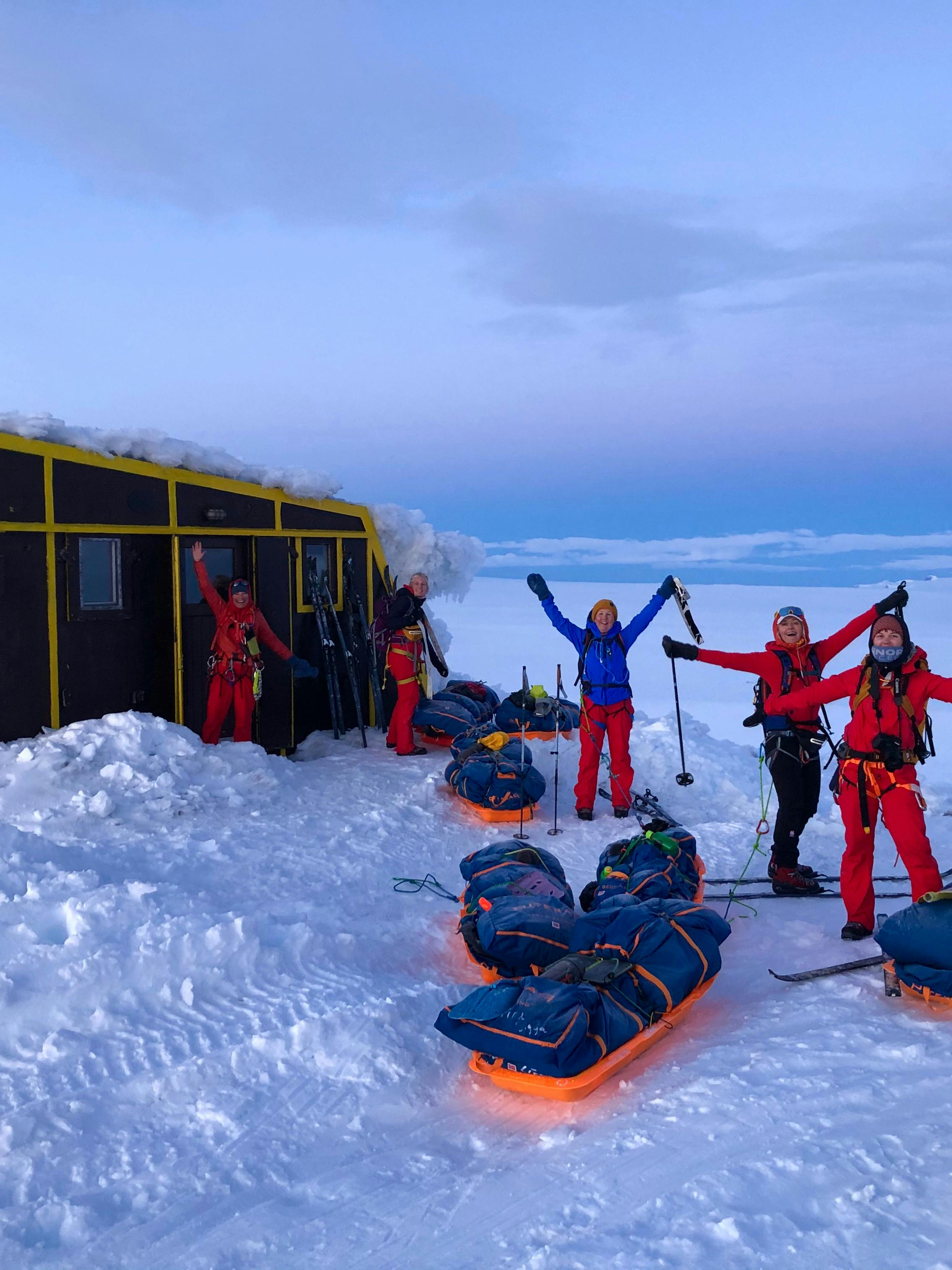
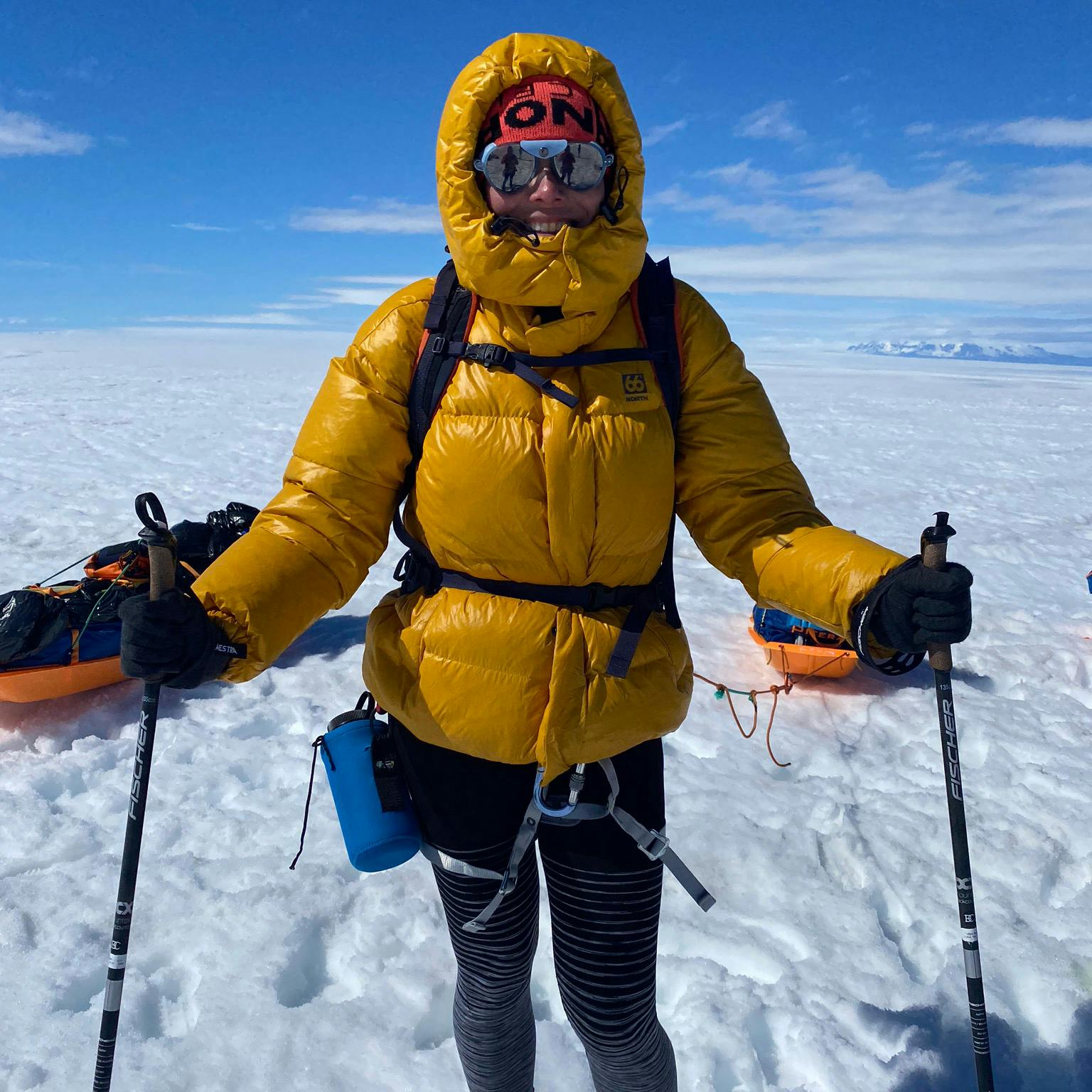
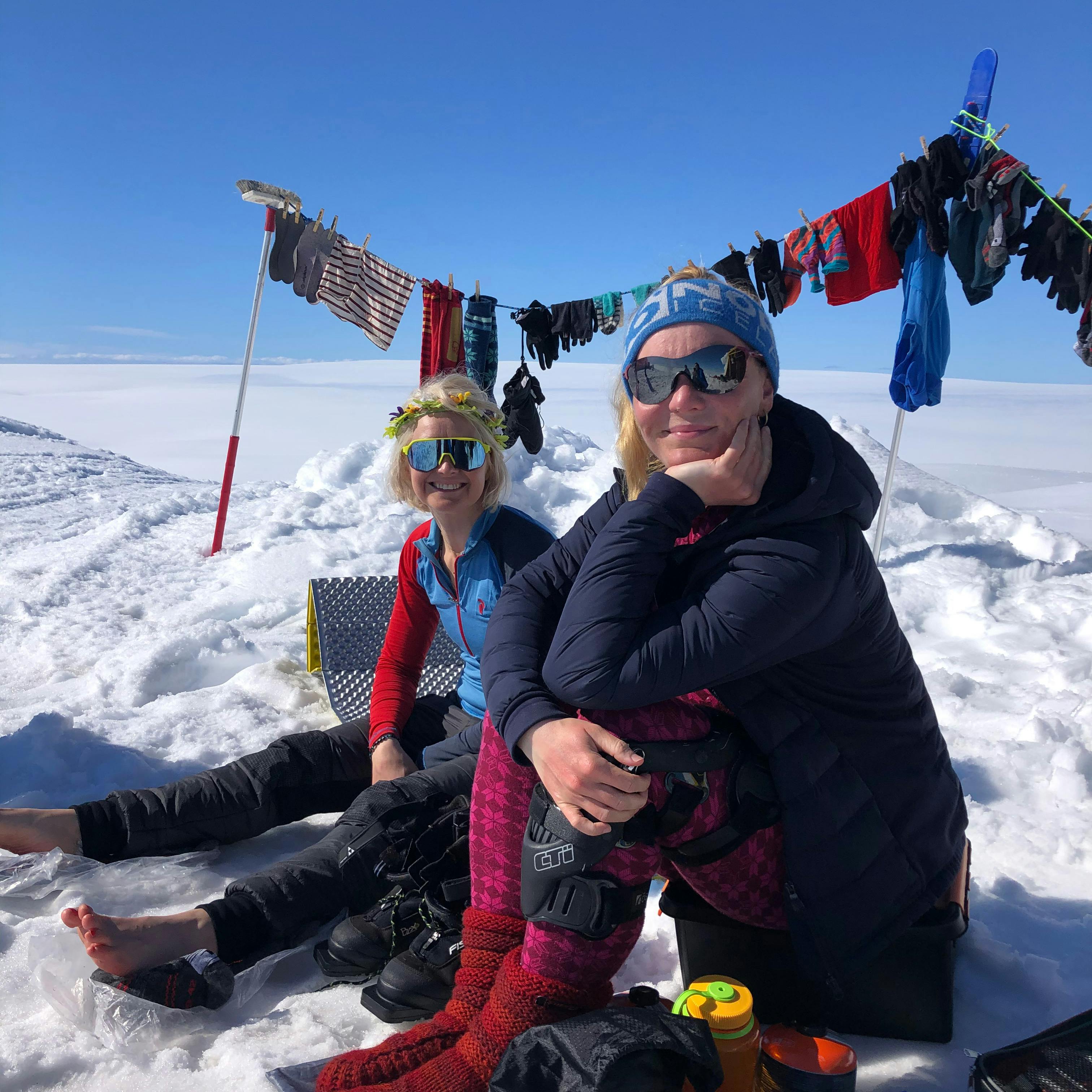

When Sirrý Ágústsdóttir was diagnosed with cervical cancer for the second time in 2015, she was told that she had one to three years left to live. She made the decision not to let cancer control her life. That life was now and it must be enjoyed to the fullest.
Sirrý found her power and happiness in mountain hikes and soon had the idea to kill two birds with one stone: To encourage women to experience the healing power of nature through outdoor activities, as well as raise funds for the charities Líf and Kraftur. Thus, the campaign Lífskraftur was born, which at the beginning of May 2021 will back a hundred-woman hike up the highest mountain in the country, Hvannadalshnúkur.
The women call themselves the Snowdrifts and are, in addition to Sirrý, the expedition leaders Vilborg Arna Gissurardóttir and Brynhildur Ólafsdóttir, along with Anna Sigríður Arnardóttir, Birna Bragadóttir, Heiða Birgisdóttir, Hólmfríður Vala Svavarsdóttir, Hulda Hjálmarsdóttir, Karen Kjartansdóttir, Þórey Vilhjálmsdóttir Proppé, and Soffía S. Sigurgeirsdóttir. Four of the women have battled cancer. All have lost someone close to them to cancer.
It should be mentioned that a few months after the expedition, Sirrý received the news that she had passed the so-called 5-year cancer wall. She had been cancer-free for 5 years. Healthy. Cured.

The Snowdrifts on their journey to cross Vatnajökull

This is the story of when the Snowdrifts crossed Vatnajökull glacier.
Preparations and then COVID-19 Hit
We planned to set off at the beginning of March or April 2020, and it looked like there would be up to 15 women in the expedition if nothing went wrong. There were plenty of things to think about for the trip, not least because this was an official fundraising effort that needed to be meticulously planned. For example, it was clear from the beginning that not only would it be necessary to have a traditional backup team in regards to the safety issues of the expedition, but we would also need an army of assistants to help manage the fundraising, liaise with the press and keep everything going while the group was on the glacier.

The women in the expedition were at different ability levels, and so it was decided that each one had to take responsibility for their own training and physical condition, practice skiing and build their endurance and stamina. Then the group would meet and mingle at both planning and training meetings, as well as on official training trips.
In the end, there were only two training trips because at the beginning of March, the coronavirus pandemic hit Iceland and everything went into lockdown. Three women in the expedition contracted the virus and were laid low, while others had to face various losses and injuries. All of them needed time to build themselves up again,
in addition to which it was obviously irresponsible to embark on such a large expedition on the glacier during the height of the pandemic. The aim of the expedition was fundraising, and that had to take precedence in all planning, putting aside our feelings and hopes. In our estimation, the nation wasn’t ready to contribute to the fundraising in the middle of a pandemic, and we, therefore, made the decision to postpone the expedition, at least until May–June and possibly by a year.
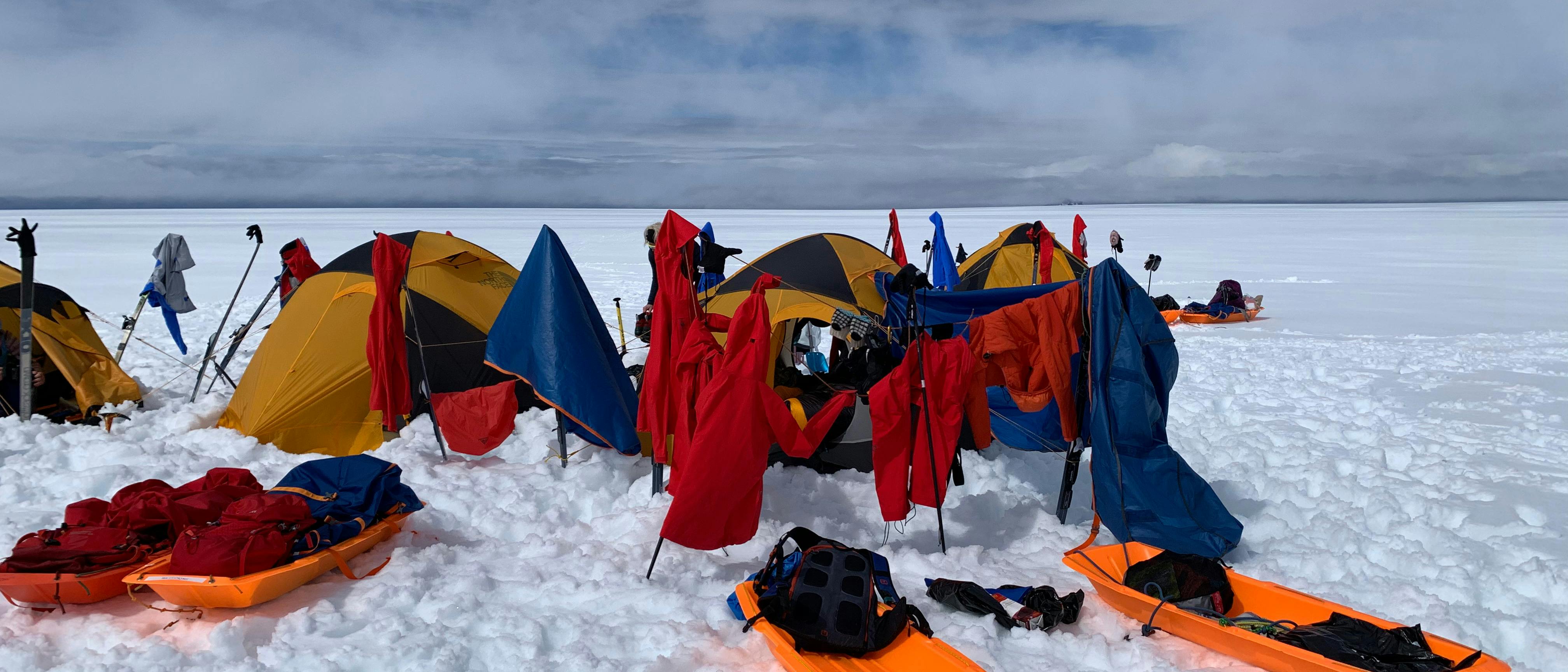
By the end of summer 2019, Sirrý’s idea for a fundraising expedition by a group of women over Vatnajökull had had time to grow and flourish and had started to assume its final form

The First Steps on the Glacier.
Day 1
And then all of a sudden, the day arrived. The group was spread across the country doing outdoor activities but came together in Hrauneyjar on the evening of Saturday, 6 June and the morning of 7 June.

At first, the glacier was rough and dirty, but treading the snow lines went better than expected, and before we knew it, the conditions were great and we were moving quickly up the glacier. We had decided beforehand to try to aim for 10 km that day, but things were going so well that it was hard to stop when we reached that goal. But we decided to be sensible and not get ahead of ourselves, since there were many long days ahead of us.
The group quickly put up their tents and settled in, melting water, cooking, and eating. All were energetic, happy, and excited, some so much that it took them an unusually long time to fall asleep that night.
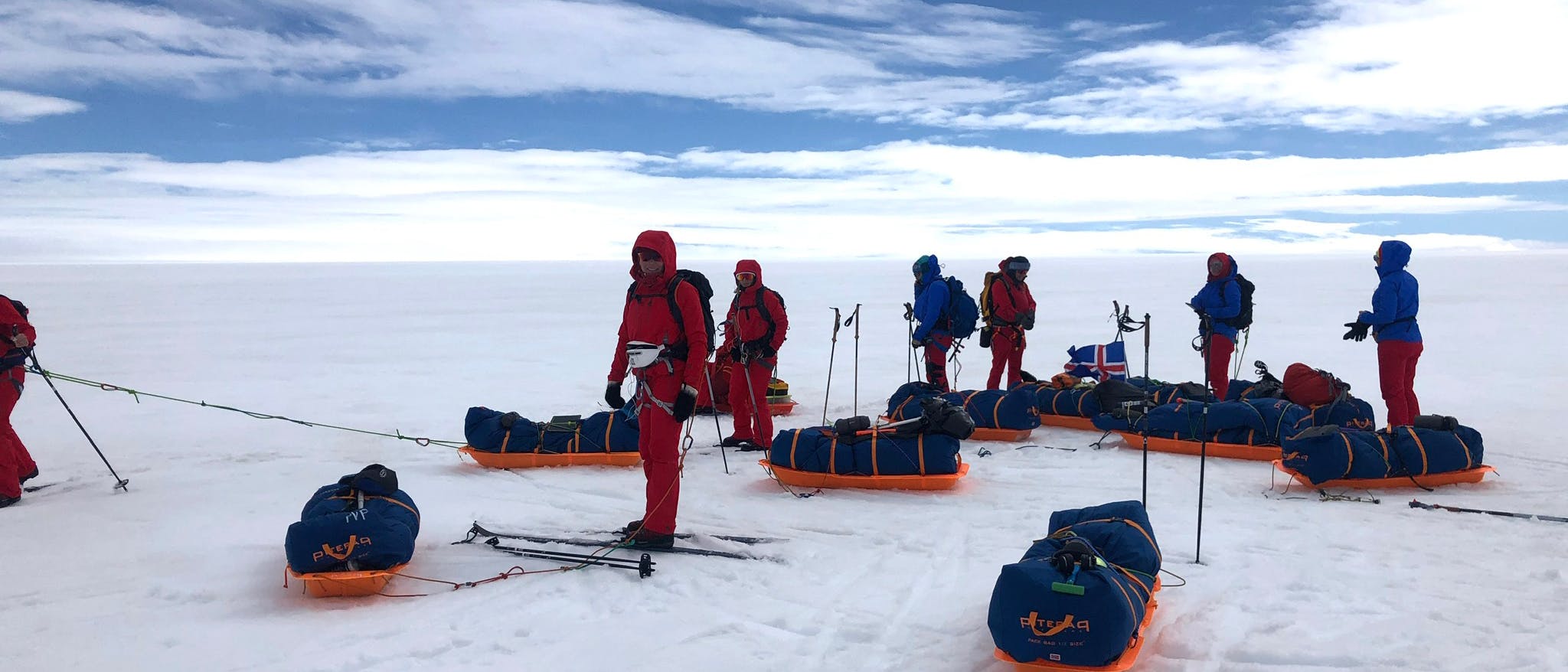

Sun and Showers
Day 2
When we woke up, the next day the weather was pretty grim. The day before, the weather had been better than the forecast had predicted, and we were optimistic that the luck would continue to be in our favour. But that, day all forecasts went out the window. We decided to wait for most of the rain to pass, since it was supposed to let up later in the day. But the rain was heavier and lasted for longer than forecast. It didn't seem to want to let up and actually never did.

Day 3
The group gradually elevated up the glacier, and at 21:30 that evening, we reached a small ravine that lies under Hábunga to the north. Words cannot describe the feeling and the view that greeted us. To the south, the highest peaks of the Skaftafell mountains were revealed, along with Hrútafjallstindar and Öræfajökull glacier with its proud peak Hvannadalshnjúkur. To the north were the Grímsfjöll mountains, the south edge of the Grímsvötn caldera, where Svínahnjúkar vestri and eystri are the highest peaks. All this mountain view was then reflected in a majestic sunset where the colours changed rapidly and covered the whole spectrum from yellow to orange, all the pink colours you can imagine and finally into the blue tones. Understandably, it was very hard to continue skiing in this glory, and the photo stops became numerous. The last stretch up to Grímsvatnsskáli lodge, which stands on Svínahnjúkur eystri, therefore took a bit longer than planned, and we approached the lodge slowly. The last hill is short but very steep and seemed to go on forever. So it was a group of tired but very happy skiers that crawled into the lodge around 1:00 in the morning.
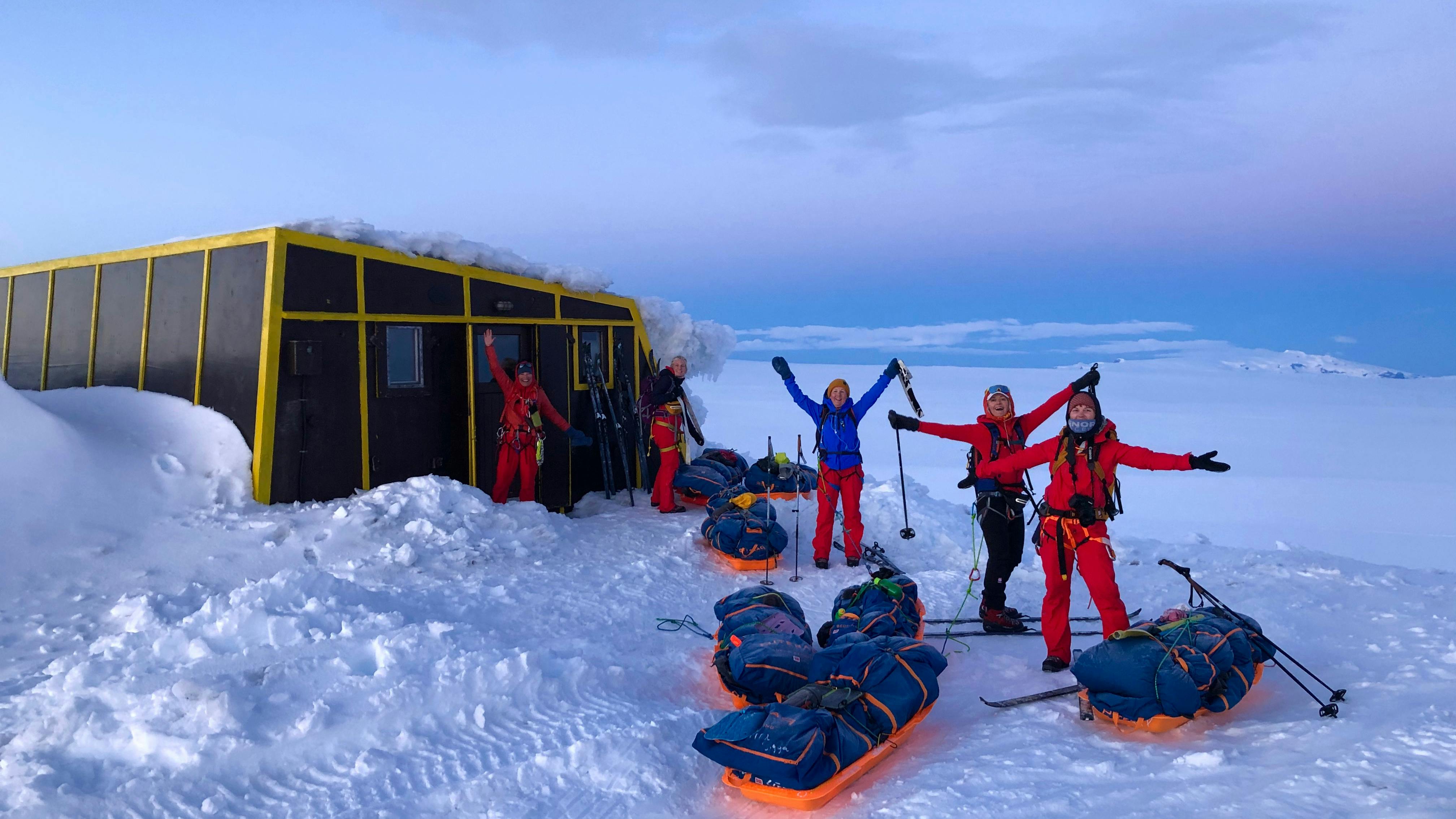

Day 4
The group woke up around noon to sunshine and warm weather. Some of the equipment was still wet from the rain two days earlier, and all the gear was put outside in the sun. It was quickly decided that we’d spend the whole day being lazy and comfortable and to do it without any regrets or feeling guilty about spending such a good day being stationary. This was a good decision. There was something sacred in the air over Grímsvötn that day, and all of us were overflowing with gratitude and joy for the friendships, the weather, the view, the beauty and life. One of the results of good weather on Grímsfjall mountain is that the air pressure often becomes too high for the legendary Grímsvötn sauna to work properly. So we had to content ourselves with sunbathing this time around and spread out on the tuff base rocks below the lodge with hot cocoa and baked goods.

In the middle of the day, we heard that the Civil Protection Investigation Committee was meeting to discuss, among other things, the increased emissions of sulfur in Grímsvötn, which indicated that a flood and/or an eruption could be imminent. A short while later, the Coast Guard’s helicopter flew over for an inspection and we talked to the geologist Magnús Tumi Guðmundsson, who was on board. There wasn’t considered to be any reason for us to move away from the area, and we felt very calm, as it was apparent that the situation, and we, were being closely monitored. But we ca’'t deny that these circumstances played a part in making this day unforgettable.

Day 5
Early in the day, the conditions were wonderful, the snow hard and good. The kilometers flew past under our skis, and Hvannadalshnjúkur moved slowly, but surely, past us on the right. After around a 3-hour hike, the Tetra unit beeped. It was the Emergency Hotline informing us that we had exited the defined danger zone, that is, the possible outflow area of the Grímsvötn floods.
As the day continued, the sun gained the upper hand and the top layer of snow softened and melted. That means that the skis sink lower and that it becomes harder to make tracks and drag a sled. The hike across the glacier was organized so that Vilborg Arna and Brynhildur took turns leading the group, usually for about 5 km at a time, before stopping to eat and use the toilet.

Day 6
This became the day of Kverkfjöll, which appeared on our left and moved past and behind the group as the long day of work progressed. It was colder and windier than the previous days. Sometimes the sky was bright and blue, but for long stretches, everything blurred together into one big white void, so we needed to keep focussed and our eyes glued to the GPS.
It’s incredible how easily you lose your sense of direction in a whiteout like this when everything blends together into one unbroken whole. Good advice, especially if many people are walking in a row, is to pay attention to the line behind you. There’s no better way to assess whether you’re walking in a straight line. If you can only see the person behind you, then you’re walking in a straight line and the direction is all right. But if, for example, you’re looking at the last two skiers from the side, then you’ve accidentally made a 90° turn!
Day 7
On this day, we decided to ski vigorously and set up camp beneath the western part of Goðahnjúkar. The view was amazing. Herðubreið and Snæfell were in full view all day, and now and then, we could glimpse Goðahnjúkar ahead, although the peaks were mostly under cloud cover.
However, this was a difficult day for many. The conditions were worse than in the past few days. We had also been traveling for a week and various foot ailments had started to appear. Soffía’s knee grew worse as we went on, and nasty heel blisters formed that also started to afflict Heiða, who is used to a lot. Sirrý’s Achilles tendon started aching, and she was limping badly by the end of the day.

In spite of everything, there was no sense of defeat, and we skied the longest distance on this day out of all the days, or about 30 km. Super-Sportacus Hólmfríður Vala, though, probably skied around 40 km, since she was constantly moving up and down the row of skiers to check on everybody’s health and condition, cheering them on and taking pictures.
It helped that the weather was lovely, and camping in the mountains was a nice change after the long hike across the flat glacier in the previous days. The hikers’ wounds were tended to, blisters punctured, knees and ankles wrapped, yellow pus let out into the daylight and bandages changed. All while Anna Sigga brought us joy by blowing bubbles in the pink sunset.
We had kept the final destination of the expedition open and wanted to let it be decided by the weather and the group’s condition. After a little deliberation, it became clear that, despite various injuries, everyone felt up to skiing the longest possible line on the glacier. So we decided to end the journey east of the glacier, down to the lodge in Geldingafell and onwards to Egilsstaðir, rather than taking the shorter route south from the glacier, down to Hoffellsdalur and to Höfn í Hornafirði. Now we just had to cross our fingers and hope that the weather gods would bestow their blessings on this plan.

Goal Achieved
Day 8
When setting off on this final day, the weather looked like it could go either way. A small cloud cover lay over the top of Goðahnjúkar, and ahead of us was a long and arduous elevation. We put skins under our skis, set our jaws, and then started our ascent. When we reached the top, it was obvious that the Snowdrifts were blessed and favored by a higher power. The weather was divine, not a cloud in the sky and a clear panoramic view.
Goðheimar, the Icelandic Glaciological Society’s small lodge, stands right where we came up, although only one of the eaves was visible, as the rest were completely covered in snow. The phone connection there was perfect, and we all called home to report on our status and when we could be expected back in civilization. The Goðahnjúkar area has 14 of the 100 highest peaks in Iceland, and it was almost physically impossible to take your eyes off the view to start our descent. By now, all sense of fatigue had evaporated, and all of a sudden, finishing the last 15 km felt more like a tiny formality. The last stretch down from the glacier was indescribable. The hill was perfect, neither too steep nor too flat, and we skied down, singing, crying, and screaming with joy.

That night, Sirrý magically prepared a fantastic meal from the group’s leftovers. All kinds of nice foods had been hiding in the innermost compartments of the luggage. Here a cheese, there some dates, peppers, and oranges to pull out and provide a welcome change from the dry food of the past days, although it was mostly the breakfast we were all sick of and had increasing difficulty in getting down. Oats mixed with cocoa powder, nuts and raisins did not become a favorite after many days in a row. But it was interesting to see how different the appetite was between the women; while some couldn’t get enough of butter in their cocoa, dry food, and even on their own, others mainly survived on sweets, chocolate, and gummi bears.
On journeys like this, tent partners obviously spend most of their time together, but that night in Geldingafell, the group managed to sit down as a whole and chat for the first time since Grímsfjall. We shared an important moment, shared our experience of the expedition, talked about personal highlights and low points, victories, and defeats, and what we had learned. All the while, nature provided the backing track and blessed us with one more pink sunset.

Day 9
The forecast was for rain and high winds that day, and in advance, we weren’t sure how we’d manage skiing from the lodge and down to the road where we could be picked up.
As it turned out, there was hardly any rain, and in addition, the wind was at our backs; for long stretches, we could just hold our arms out and let the wind blow us forward. We were also lucky that despite it being mid-June, there was still considerable snow in the area. So we didn’t have to take off our skis or carry the pulks and could follow snow lines all the way down to the car that transported us to Egilsstaðir.
We were expecting to be exhausted by the end of the expedition, but that didn’t turn out to be the case. At this point, the group agreed that the journey had not been too long and that if it wasn’t for the occasional foot ailment, everyone would have been willing to keep going and even hike the same way back! Some had lost a few kilos, but the group had mainly just become more muscular and strong. Of course, there was a lot of physical fatigue that had accumulated, but that kind of fatigue is often not evident right away, not until a few days later when the joy and adrenaline from achieving your goal have faded.
And what is the first thing women will do after 8 days on a glacier? As strange as it sounds, the group was reluctant to hit the showers and get changed. All of us were more than happy to sit for ages in our woolly underwear and chat. The only thing casting a shadow over our joy was lip burn, which made it very painful to drink the champagne we had been looking forward to for so long.
Not that we let that stop us...
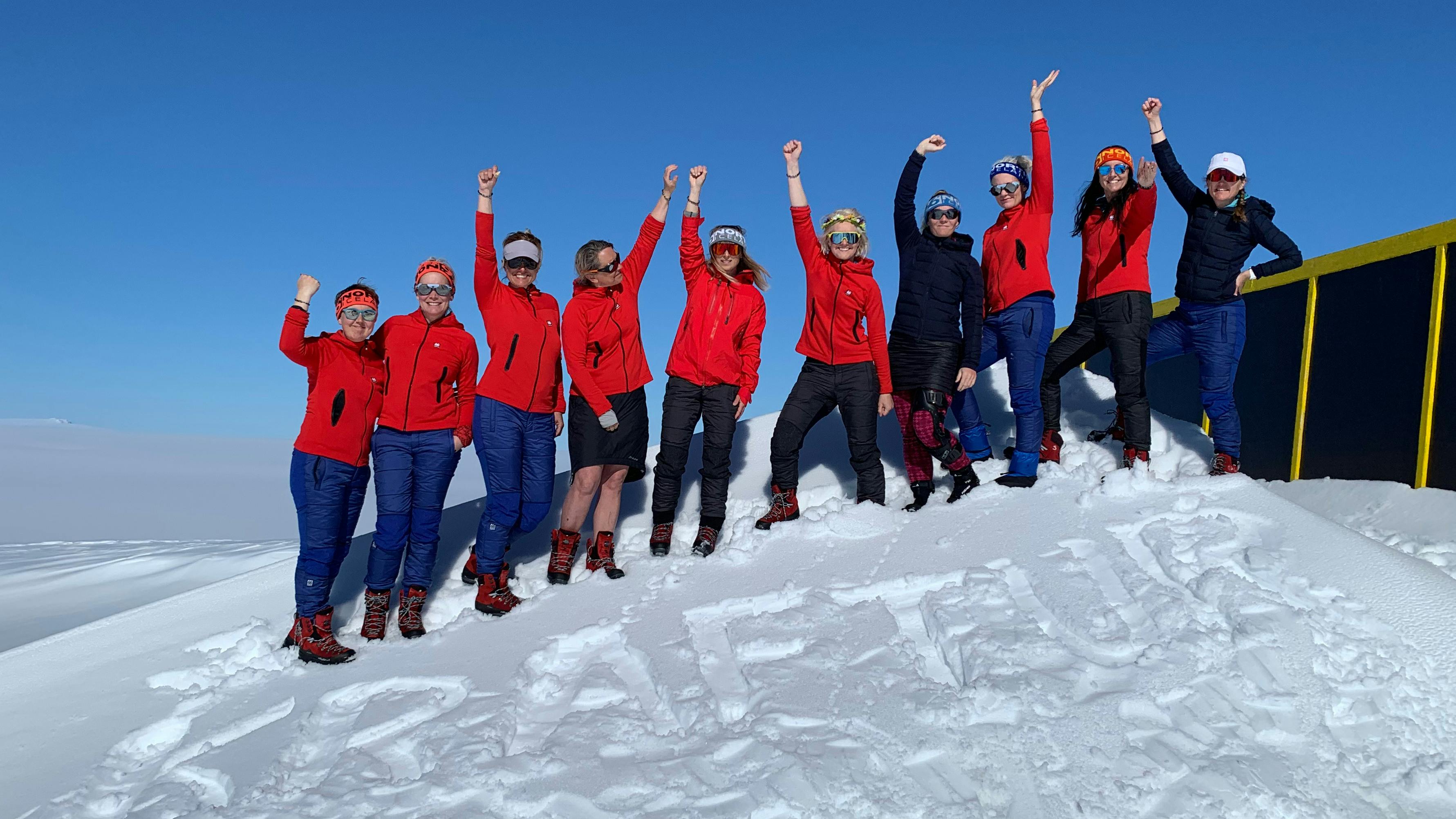
Coming Up for the Snowdrifts
On 1 May, Sirrý and the Snowdrifts will hike Hvannadalshnjúkur on behalf of around 100 women. The name of the expedition is "Kvennadalshnjúkur”. The aim of this women’s hike is to collect pledges for improved conditions and experience of patients with cancer and blood diseases at Landspítali University Hospital's new medical ward. In this new ward, the strength and support of the charities Líf and Kraftur will be crucial, but both charities are dear to Sirrý, as she has been through cancer treatment in the hospital and is very familiar with the need for them. The Snowdrifts raised ISK 6 million on their hike across Vatnajökull, and now the fundraising will continue for the development of the new ward.
The hike up to Iceland’s highest peak takes 14–16 hours and is one of the longest day hikes and highest elevation in mountaineering in Europe. Many of the participants are hiking for a loved one who has been afflicted with cancer, and furthermore, there are women in the hike who have fought cancer themselves. A portion of the hikers’ entry fee also goes to the collection. The hike is sold out, but you can register for the waiting list on www.lifskraftur.is